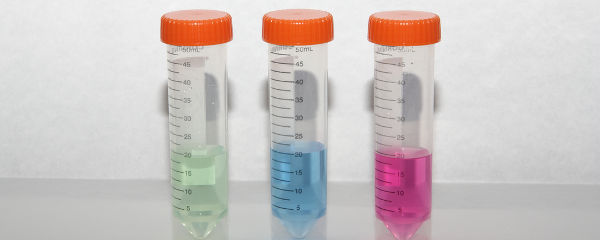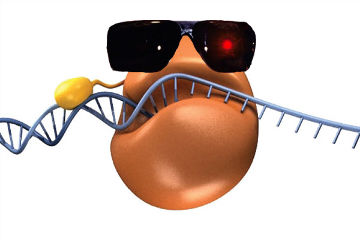What I’ve Learned:
“DNA polymerase: come with me if you want to replicate.”
DNA polymerase is an enzyme present in every living cell. Hay cells, jay cells, even George Takei cells. Oh, my.
In these cells, DNA polymerase has one job — just one job — and it’s both the easiest and hardest job on Earth. Biology textbooks would tell you that job is to “replicate” the cell’s genetic material, reading and copying DNA so when the cell splits, both new cells contain a full set of genes.
And that’s true, in the same way it’s true that Tito Jackson recorded twenty Jackson 5 records. He did — but he had a hell of a lot of help.
It’s the same with DNA polymerase. It plays an important role in replicating DNA, sure, but it’s led to the job site by an entourage of support proteins, propped into place, and prompted for its lines. Each bit (or “base”) of DNA to be copied is a cue, and it’s DNA polymerase’s job to add the right complementary base in response. There are four different kinds of bases, so it only has four lines to remember.
This is why DNA polymerase’s job is the easiest in the world. It’s treated like a star. It gets driven to the set, carried to the stage, and it barely has to study a script. It just reads a cue and delivers the right line, out of four choices. It’s the gig of a lifetime.
Actually, I imagine it’s a lot like Arnold Schwarzenegger’s life these days. He probably does the odd public appearance for pocket change, followed around by a gaggle of handlers. They’d behave like the DNA replication helpers — getting him to the podium, making his hair look nice and prompting him for the appropriate line:
If it’s a Terminator convention, he’ll say: “I’ll be back!”
At a children’s event: “It’s not a tumah!”
At a GOP fundraiser: “I’m the Governator!”
For a crowd of Predator fans worried about Anna: “Get to da choppa!”
So wherever he goes, a flunky whispers into his ear: “Terminator”, “children”, “GOP” or “Anna”. And Arnold gives the proper response.
(Maybe the flunky even shortens it to one-letter codes: T, C, G and A.
Aw, yeah. You biochemical geneticists see what I did there.)
So DNA polymerase’s job is simple — as easy as a T-800 following a four-path if-then logic loop. Which is to say, it’s easy to do once. Even a few times a week, a la the former-Governator.
But there’s the rub. Human DNA polymerase reads and matches a DNA base about fifty times per second.
(E. coli polymerase is even faster, around one thousand matches per second. If you can picture a bacterial Arnold Schwarzenegger, moving at twenty times the speed. Hasta la nightmare, baby.)
That’s why DNA polymerase has the hardest job in the world. Our genomes are three billion bases long, and in rapidly-dividing cells like skin or hair or stomach lining, the replication never stops. One mismatch could create a mutation that kills the cell, or cause out-of-control growth into cancer. (“Then it IS a tumah!”) Yet our DNA polymerases are extremely accurate, mismatching less than once every ten million bases — and they can even correct their occasional mistakes.
Which is good news for us. It’s no big deal if an aging actor accidentally tells a bunch of six-year-olds to “get to da choppa!“. But our inner Ahhhnolds get their lines right — all the time, nearly every time, and without the help of cue cards. That’s why if it bleeds… we can find DNA polymerase inside it.





